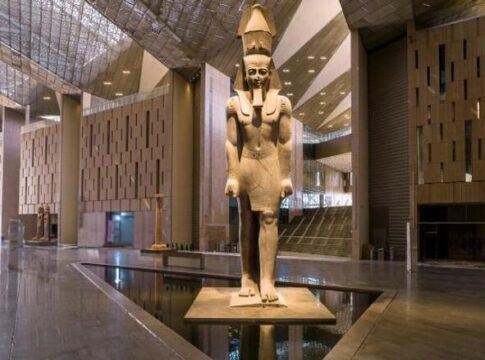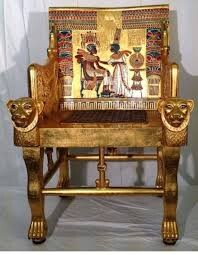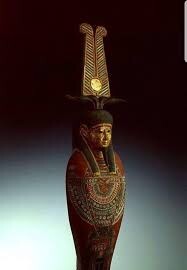“Delayed again.” The phrase has become a refrain as enduring as the ancient chants once echoing through the Valley of the Kings. In a twist fit for an archaeological thriller, Egypt’s Grand Egyptian Museum (GEM) has once again postponed its long-awaited grand opening—now rescheduled toward the end of 2025. Prime Minister Mostafa Madbouly, citing the “evolving instability” in the region, announced the decision. But for many, this latest delay isn’t just political. It’s personal. Or perhaps… supernatural.
For over two decades, the colossal museum built at the foot of the pyramids has faced an almost cinematic series of setbacks: pandemics, economic tremors, fires, and now wars. The whispers grow louder: Does GEM hold a curse or a hidden treasure?
The dream of GEM began in 2002, designed to be the world’s most advanced archaeological institution, housing over 100,000 artifacts, including the entire tomb collection of Tutankhamun—many of which will be displayed together for the first time since their discovery in 1922. But from the start, things didn’t go according to plan.
Originally scheduled to open in 2012, the Arab Spring upheaval sent construction into limbo. After recovering, the museum aimed for a 2018 soft launch, only to be halted by a bizarre fire near the entrance just weeks before its preview. Locals dubbed it “The Fire of Warnings.”
Then came the COVID-19 pandemic in 2020, derailing global tourism and the museum’s opening date—again. Hopes resurfaced for 2021, then 2022, with sneak peeks finally granted in March 2023 to diplomats and select guests. A semi-public access phase in October 2024 teased the world with Tutankhamun’s golden throne, child-sized sandals, and even his traveling cosmetics chest.
The grand inauguration? Slated for July 3, 2025—until now.
The idea of a pharaonic curse may sound like tabloid fodder, but its history runs deep. When Howard Carter discovered Tutankhamun’s tomb in 1922, a series of strange deaths followed, including that of Lord Carnarvon, the financier of the dig, who died from an infected mosquito bite mere months later. Some said it was a coincidence. Others pointed to the fabled inscription allegedly found in the tomb: “Death shall come on swift wings to him who disturbs the king.”
While scholars argue no such curse was ever recorded in Tut’s tomb, the myth took hold—and GEM has only fueled its modern retelling.
One of the eeriest pieces on display is a statue of Ptah-Sokar-Osiris, discovered buried in an unmarked tomb in Saqqara. Ancient texts describe the figure as a vessel to “trap the ka (soul) of the unworthy.” It’s been linked by spiritualists to at least one museum worker reportedly afflicted with sudden seizures after accidentally touching it without gloves.
Another chilling object is the Set-animal idol—representing the god of chaos, storms, and violence. The figure, carved from ebony wood, carries an inscription that loosely translates to: “He who speaks my name shall wake me.” Egyptologists call it a harmless metaphor. Local guides, however, refuse to pronounce the full epithet aloud.
Yet, not all is mystique. Madbouly made clear that current events—particularly the war in Gaza and regional tensions—make hosting a global event ill-advised. The GEM inauguration was expected to attract leaders, royals, and dignitaries from across the globe. Egypt’s leadership is wary of staging grand ceremonies under the shadow of conflict.
Still, the combination of legend and logistics has cemented the museum’s mythos.
“This is more than a building. It’s a gateway to the netherworld,” says Dr. Waleed Amer, an Egyptologist at Ain Shams University. “You don’t gather 5,000 years of power in one space without stirring echoes from the past.”
GEM will house colossal statues of Ramses II, ceremonial beds from Tutankhamun’s burial chamber, and a reassembled solar boat, believed to have carried the soul of Khufu into the afterlife. One of the lesser-known but spine-tingling items is a limestone ushabti statue with tiny hieroglyphs thought to be a plea from a tomb worker begging not to be buried alive in service of the king.
The museum, a $1 billion project just a stone’s throw from the Great Pyramid, is ready. Its galleries shimmer with LED-lit glass and millennia-old wonder. But its doors remain sealed officially to the world—just like so many ancient tombs before they were “meant” to be opened.
Whether it’s international diplomacy, a string of unfortunate coincidences, or the restless spirits of Egypt’s past, one thing is clear: the Grand Egyptian Museum is in no rush to unveil itself.
Perhaps that is the final lesson of the ancients: timing is everything… especially when eternity is involved.






